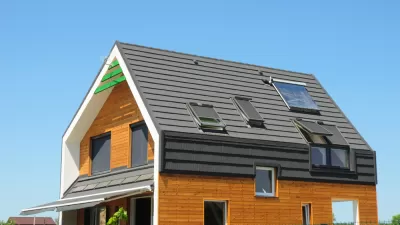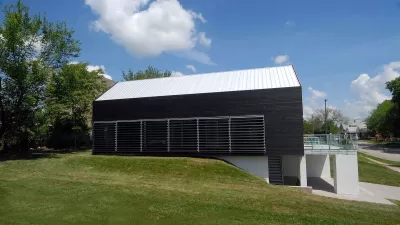From Passive House design to a broader range of amenities, affordable housing developers are finding new ways to make housing more efficient, comfortable, and flexible for residents.

In an article for Building Design & Construction, Quinn Purcell highlights the ten most relevant trends in affordable housing development. “Among affordable housing developers today, there’s one commonality tying projects together: uncertainty.”
Passive House design takes the top spot, signaling the growing importance of sustainability in building practices. “In today’s affordable housing landscape, request for proposals (RFPs) are identifying a desire for net zero operational, Passive House, and WELL building standards—more than just green design.”
Builders are also including more amenities that recognize the need for outdoor space and community areas. “Across the board, we’re seeing an increase in amenities that were once considered market-rate. Rooftop spaces, outdoor recreation, and courtyards are increasingly common (especially since the Coronavirus pandemic brought more people to the outdoors).”
Affordable housing is also a prime candidate for Trauma-Informed Design (TiD), an approach that uses thoughtful design to create an environment of safety and security. Similarly, developers are moving toward mixed-use projects, higher density, and heightened connectivity to the local community and transit hubs.
In addition to trends in architecture and design, the article also highlights regulatory challenges and trends such as lengthy project timelines and a growing interest in combining various local, state, and federal incentives and credits to make projects financially viable.
FULL STORY: Top 10 trends in affordable housing

Alabama: Trump Terminates Settlements for Black Communities Harmed By Raw Sewage
Trump deemed the landmark civil rights agreement “illegal DEI and environmental justice policy.”

Planetizen Federal Action Tracker
A weekly monitor of how Trump’s orders and actions are impacting planners and planning in America.

Why Should We Subsidize Public Transportation?
Many public transit agencies face financial stress due to rising costs, declining fare revenue, and declining subsidies. Transit advocates must provide a strong business case for increasing public transit funding.

Understanding Road Diets
An explainer from Momentum highlights the advantages of reducing vehicle lanes in favor of more bike, transit, and pedestrian infrastructure.

New California Law Regulates Warehouse Pollution
A new law tightens building and emissions regulations for large distribution warehouses to mitigate air pollution and traffic in surrounding communities.

Phoenix Announces Opening Date for Light Rail Extension
The South Central extension will connect South Phoenix to downtown and other major hubs starting on June 7.
Urban Design for Planners 1: Software Tools
This six-course series explores essential urban design concepts using open source software and equips planners with the tools they need to participate fully in the urban design process.
Planning for Universal Design
Learn the tools for implementing Universal Design in planning regulations.
Caltrans
Smith Gee Studio
Institute for Housing and Urban Development Studies (IHS)
City of Grandview
Harvard GSD Executive Education
Toledo-Lucas County Plan Commissions
Salt Lake City
NYU Wagner Graduate School of Public Service





























